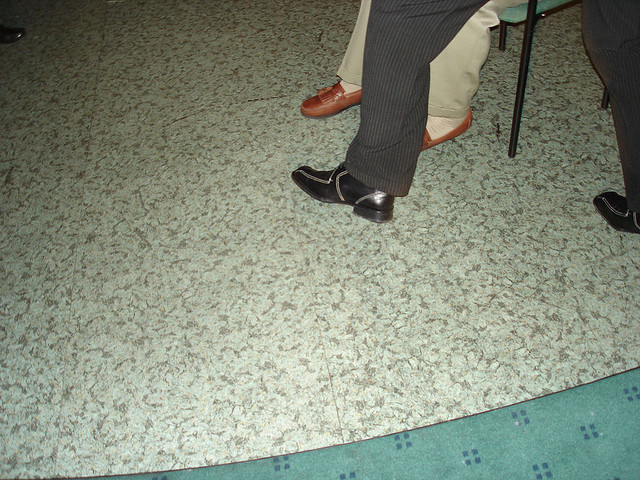Think back to playing a simply childhood game like Musical Chairs. The actual gameplay depends only on auditory clues – something you take for granted as a kid, but something apparently lost on game engineers who insist exclusively on advanced 3D rendering engines for visuals. And because you get your body involved, the game becomes dynamic. That musical cue isn’t just off in the background: in the dizzying run around the chairs, the soundtrack can become the singular focus of your brain, an urgent score to the — DIVE, got the chair!
As the scene around game experimentation grows richer, there’s a rekindled interest in how game mechanics can play to different senses. In some cases, it can be a source of whimsy; in others, it’s the only way to design games for people who are absent one of those senses. And an ongoing exploration of music and sound as gameplay mechanic – not just gameplay accompaniment – ought to interest composers and sound designers. When you look at a conventional arcade game, tuning your reflexes to the graphics is key, even if sounds provide reward and ambience. In these games, the sound is where the play is.
Johann Sebastian Joust has a lot in common with Musical Chairs. The game input is the lovely Sony PlayStation Move motion controller, which – yep, you guessed it, is where the jousting comes in. (An earlier version used the Wiimote.) But in place of graphics, listening to the music itself tells you when to act, just as in the childhood game:
When the music plays in slow-motion, the controllers are extremely sensitive to changes in acceleration. When the music speeds up for, this threshold becomes less strict, giving the players a small window to dash at their opponents. If the player’s controller is ever moved beyond the allowable threshold, that player loses.
Little wonder that the game resembles some of those kids’ games: the designers reveal that they got the idea after improvising “folk” games with friends. Now, there is some concession to adding additional feedback – the controllers use the light-up ball on the end and rumble feedback just to make absolutely clear what’s going on; some “sound games” are more pure in their all-sonic interface. But the idea remains the same.
The game is the work of the Copenhagen Game Collective. They describe themselves as “multi-gender, multi-national, non-profit”; I would add to that “blazing hot stuff.” CGC’s games have earned some serious accolades; for one, B.U.T.T.O.N., a group party game, was the runaway hit of the Kokoromi GAMMA party in 2010, and also showed up wowing crowds again at the same Kill Screen / Museum of Modern Art Show at which we saw Pxl Pusher, covered yesterday. (CDM and myself were also involved in that Gamma party, and co-organized a one-button art show at San Francisco’s GAFFTA art space.) But the group has in no small sense put Copenhagen on the map.
The team for this title:
Douglas Wilson: concept, programming, and video
Nils Deneken: graphics and announcer voice
Nicklas “Nifflas” Nygren: music and sound
Composer Nicklas Nygren is a triple threat: game designer, coder, and composer. Check out some of his music on SoundCloud:
There’s plenty more to say about sound games and music games and interactive music for games. I gave a presentation at the Indie Gaming Showcase in Berlin on the topic at an event hosted by arts network Platoon – see their write-up. I’ll pull those notes together; if you have any nominees of game work you’d like to see covered, let us know in comments.
But for now, I’ll leave you with the image of Johann Sebastian Joust and Musical Chairs. After all, composition and ensemble playing themselves can be seen as games with musical mechanics. They certainly can even have “win” and “fail” mechanics – ask your local orchestra player.
http://www.copenhagengamecollective.org/johann-sebastian-joust/
